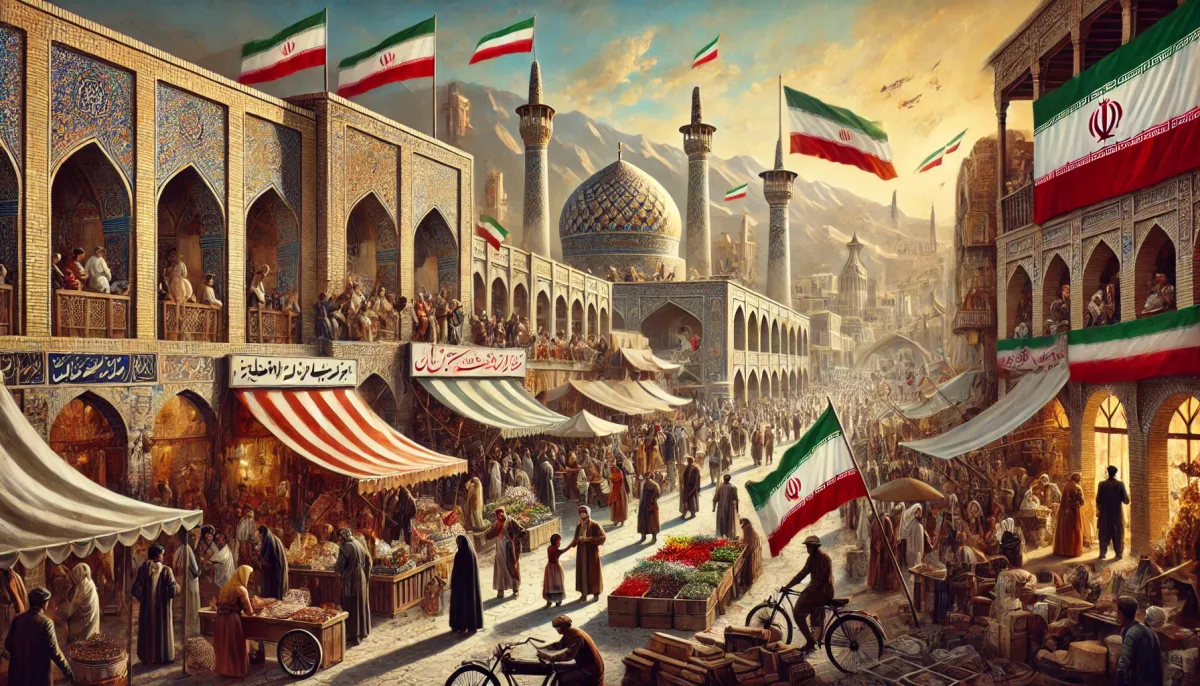

By Dr. Tim Orr
Imagine a nation in upheaval, its streets filled with chants of revolution and defiance. In the wake of the 1979 Islamic Revolution, Iran found itself at the center of global attention, its actions echoing far beyond its borders. From the dramatic U.S. hostage crisis to the devastating Iran-Iraq War, these events not only shaped Iran’s future but also had profound implications for international relations. This article delves into these pivotal moments, offering personal stories and critical analysis to understand their lasting impact on Iran and the world.
U.S. Hostage Crisis
In November 1979, a group of Iranian students stormed the U.S. Embassy in Tehran, taking 52 American diplomats and citizens hostage. This dramatic act was not merely impulsive but a calculated move to protest U.S. interference in Iranian affairs, particularly America's support for the recently ousted Shah (Sick, 1985).
One of the hostages, John, a young diplomat, recalls the terror and uncertainty of those days. For 444 days, the hostages endured isolation, fear, and the psychological toll of not knowing if they would ever see their families again (Harris, 2006). The crisis dominated U.S. news, significantly straining the fragile relationship between the two nations. Media coverage in the U.S. was relentless, with nightly updates that kept the American public on edge and deeply sympathetic to the hostages' plight.
Back in Iran, the students who took over the embassy, like Mehdi, saw themselves as revolutionaries defending their country’s sovereignty. They viewed the embassy as a "den of spies" and believed that their actions were justified in protecting the revolution (Sick, 1985). However, the prolonged crisis hardened attitudes on both sides, with the U.S. imposing sanctions that would cripple Iran's economy for years to come (Christopher, 1985). The hostages were finally released on January 20, 1981, just as Ronald Reagan was inaugurated as President of the United States, marking the end of a prolonged diplomatic standoff but leaving a legacy of mistrust (Houghton, 2001).
Iran-Iraq War
Just as Iran was beginning to recover from the revolution and the hostage crisis, it was thrust into another conflict. In September 1980, Iraq, led by Saddam Hussein, invaded Iran, hoping to capitalize on the country's post-revolution instability (Karsh, 2002). The Iran-Iraq War would last eight brutal years, becoming one of the longest and most destructive conflicts of the 20th century.
For many Iranians, the war was a grim reality of daily life. Reza, a soldier who fought on the front lines, described the horrors of trench warfare, chemical attacks, and the constant fear of death (Razoux, 2015). He recounted the camaraderie among soldiers, the despair of losing comrades, and the relentless bombardment that defined much of the conflict. The war claimed the lives of hundreds of thousands of soldiers and civilians on both sides and caused severe economic and infrastructural damage (Hiro, 1990).
At home, families like Fatemeh's dealt with loss and hardship, often not knowing if their loved ones would return. The war also saw the mobilization of Iran’s young population, with teenagers being sent to the front lines in what became known as "human wave" attacks (Pollack, 2002). These young soldiers, often motivated by a sense of national duty and religious fervor, faced horrific conditions and high casualties. Despite the tremendous human cost, neither side achieved a decisive victory, and the war ended in a stalemate in 1988, with borders virtually unchanged (Hiro, 1990).
The economic toll of the war was staggering. Iran’s infrastructure was heavily damaged, and the constant need for war supplies strained the economy. Cities like Khorramshahr were almost destroyed, and the war left deep scars on the Iranian landscape and psyche. The conflict also shaped Iran’s political landscape, solidifying the power of the Revolutionary Guard and entrenching the theocratic regime.
Conclusion
The post-revolution era in Iran was marked by dramatic and traumatic events that reshaped the nation and its relationship with the world. The U.S. hostage crisis and the Iran-Iraq War had profound impacts, creating a legacy of mistrust, economic hardship, and national trauma. These events defined a generation of Iranians and influenced global politics, highlighting the complexities of international relations and the far-reaching consequences of political upheaval.
The U.S. hostage crisis demonstrated the volatility of revolutionary fervor and the lengths people would go to assert their newfound independence. It also revealed the deep-seated animosity toward foreign intervention, a sentiment that continues to influence Iranian politics and society.
The Iran-Iraq War, on the other hand, underscored the brutal realities of modern warfare and the devastating effects of prolonged conflict. The war’s legacy is seen in the physical and psychological scars left on the Iranian population, as well as in the geopolitical landscape of the Middle East.
References
Christopher, W. (1985). American hostages in Iran: The conduct of a crisis. Yale University Press.
Cottam, R. W. (1989). Iran and the United States: A cold war case study. University of Pittsburgh Press.
Harris, D. (2006). The crisis: The president, the prophet, and the Shah--1979 and the coming of militant Islam. Little, Brown and Company.
Hiro, D. (1990). The longest war: The Iran-Iraq military conflict. Routledge.
Houghton, D. P. (2001). US foreign policy and the Iran hostage crisis. Cambridge University Press.
Karsh, E. (2002). The Iran-Iraq War 1980-1988. Osprey Publishing.
Pollack, K. M. (2002). The Persian puzzle: The conflict between Iran and America. Random House.
Razoux, P. (2015). The Iran-Iraq War. Harvard University Press. Sick, G. (1985). All fall down: America’s tragic encounter with Iran. Random House.
